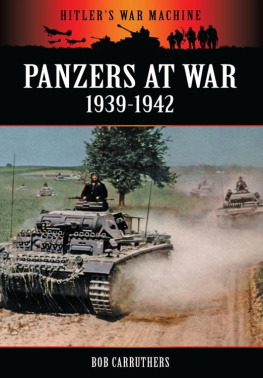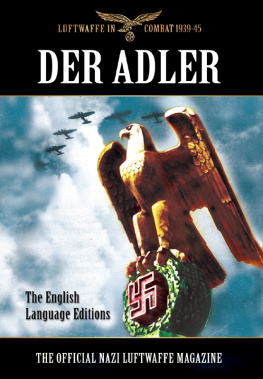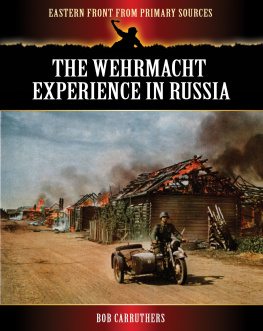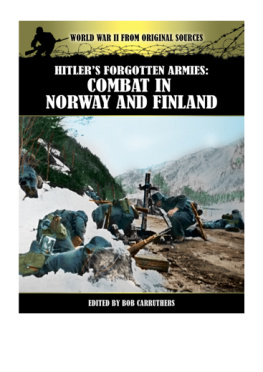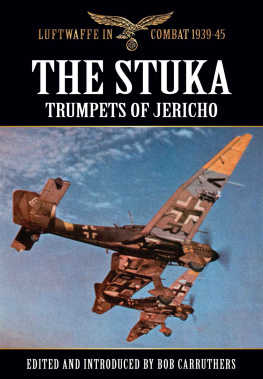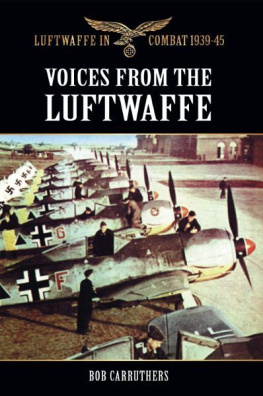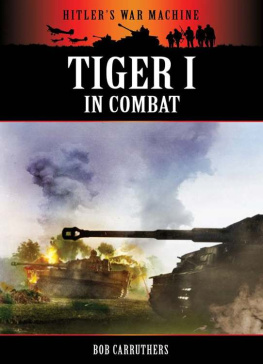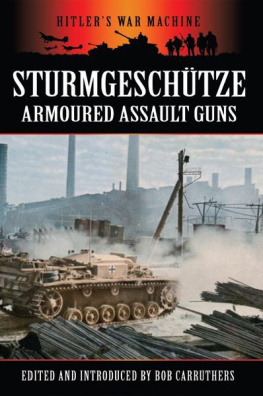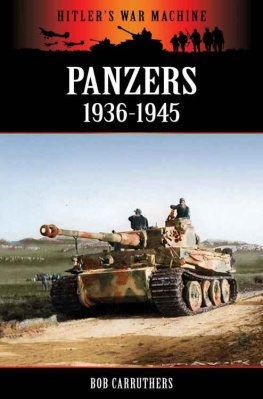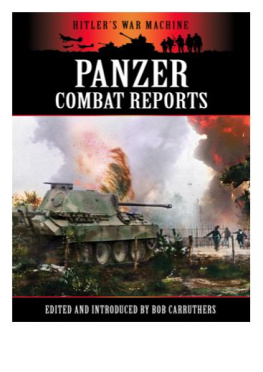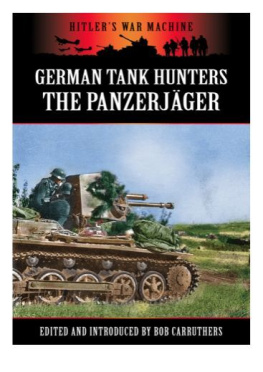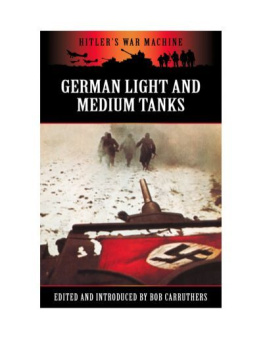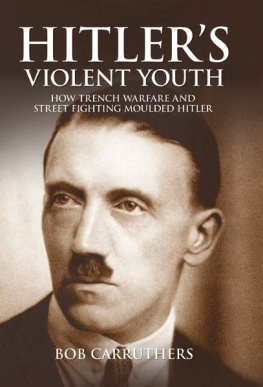


www.codahistory.com

www.codahistory.com
This ebook edition is published in Great Britain in 2011 by
Coda Books Ltd, Unit 1, Cutlers Farm Business Centre, Edstone, Wootton Wawen, Henley in Arden, Warwickshire, B95 6DJ
www.codahistory.com
Copyright 2011 by Coda Books Ltd
The moral right of Bob Carruthers to be identified as the author of this work has been asserted in accordance with the Copyright, Designs and Patents Act, 1988.
All rights reserved. No part of this publication may be reproduced or transmitted in any form or by any means, electronic or mechanical, including photocopy, recording, or any information storage and retrieval system, without permission in writing from the publisher.
A CIP catalogue record for this book is available from the British Library
ISBN: 978-1-908538-24-6
INTRODUCTION
A NEW THREAT
In April 1938, to mark the Fhrers birthday, Hitlers magnificent new army marched before him. At the centre of the great parade were the tanks of the new German Panzer Divisions. The event was staged to intimidate the world. True, most of the tanks were small and lightly armed and, unbeknownst to the foreign dignitaries, some were allegedly driven past twice, but they served Hitlers grand design. Hitler was a gambler and he gambled upon bluffing his enemies into believing his tank forces were far stronger than they actually were. By a combination of deceit and brinkmanship. Hitler had made a chilling and spectacular assertion of Germanys re-born military might.
Adolf Hitler was the man who provided the impetus to develop the Panzer Divisions of Germanys Wehrmacht, and in the campaigns of the early war years these new tank armies would strike down all before them. The German soldier would become accustomed to fighting against numerical odds but he would also become accustomed to victory. The comparatively few mechanised and armoured units were the only truly modem component of the German Army and they were the key to much of its extraordinary success. The military of many countries were familiar with wireless, with tanks and with war planes, but only in Germany were these elements so effectively combined to form fully integrated fighting units with exceptional striking power. Hitlers Generals had rewritten the rule book of battle. In Poland it took less than a month to dispose of a large but poorly equipped Polish army which had fought along rigidly traditional lines. In France, the German army successfully challenged the largest and most modern army in Europe. In the ensuing Blitzkrieg or lightning war the British forces were completely routed. Only a year later even this achievement was to be eclipsed by Germanys astonishing victories in the war against Stalins Soviet Union. In June 1941, spearheaded by tank formations, German Armies swept eastward. In a series of huge encirclements, thousands of Soviet tanks were destroyed and millions of Soviet troops killed or captured. For a while it seemed that Hitler would succeed where Napoleon had failed, by conquering the vast eastern power. On the world stage the tank had become established as a symbol of German invincibility.

Panzer III chassis in the Alkett works during 1941.
It is difficult now to imagine that such small and lightly armoured tanks could spearhead the devastating operation of Blitzkrieg. The secret of their success was speed and co-ordination of effort. In reality, the remarkable string of German successes was due less to superiority of military technology than to the excellence of German methods and training. Many of the German Panzer Division were equipped only with Panzer 1 and II light tanks. It was the new way of waging war which came as a hammer blow to Germanys opponents, forcing them to radically rethink their own military tactics. Slowly the lessons would be learned and eventually the answer to Blitzkrieg would be found.
Tanks came of age in the Second World War. They also developed quicker and changed more in a six-year period than at any time before or since. The catalyst was the demands of a technological war. Like a crazed version of Darwins Theory of Evolution, the Second World War accelerated the pace of design. Fast responses to a constantly changing situation were urgently needed and new designs had to be engineered, tested and built in an incredibly short timescale. In the space of three short years, German tank technology progressed from the lightweight and inefficient Panzer I to the mighty Panzer VI - the Tiger, the most complete fighting vehicle of the war. As an example of evolution, the transformation of the Panzer 1 to the Tiger was an almost unbelievable leap in design terms.
DARWINISM GONE MAD
At the end of the nineteenth century when he proposed his theory of evolution, Charles Darwin noted that there were many branches that led to unsuccessful species and hence to extinction. Of course, Darwin was talking about animals, but tanks, it would seem, followed broadly the same rules of evolution.
In the 20s and 30s, it was understood that tanks in the coming war would need to be able to deal with two major situations. The first were tank-versus-tank actions. Even the lightest tanks were capable of surviving explosions very close to the vehicle. Faced with the armour of a tank, explosive shell power alone was therefore of little value. To destroy a tank, it was obviously necessary to fire a projectile fast enough to penetrate the armour of the hull and disable the machine, or kill the men inside. Elementary physics tells us that force equals mass times velocity. For the job of destroying other tanks, the tank needs to be able to fire the heaviest practicable shell, at huge speeds. This produces enough force to punch through the armour of an enemy tank. Explosive power alone has little value against the thick armour of a tank. What gives the missile its penetrating power is the enormous velocity which slices through the armour of enemy vehicles. Even today, armour piercing rounds still tend to be solid shot which rely upon a very high velocity, and the enormous pressures and heat created by a round impacting on armour, in order to burn its way or melt its way through the armour to fly around inside, either destroying equipment or killing or injuring the crew.

Tanks of the Panzerwaffe silhouetted against the skyline during the advance to Stalingrad in August 1942.
The armour of most tanks of 1939 and 1940 vintage could be penetrated by relatively small calibre anti-tank weapons, but the armour piercing weapons which fire these high velocity shells were only useful in combat against other tanks. A variety of high explosive anti-tank rounds were therefore developed, which were designed to first penetrate the armour of an enemy tank, then explode inside the vehicle. This fine balancing act was rarely achieved in practice, and it is debatable whether the small amount of explosive contained in the shells was much more effective than the massive kinetic impact of a high velocity round.
Next page
